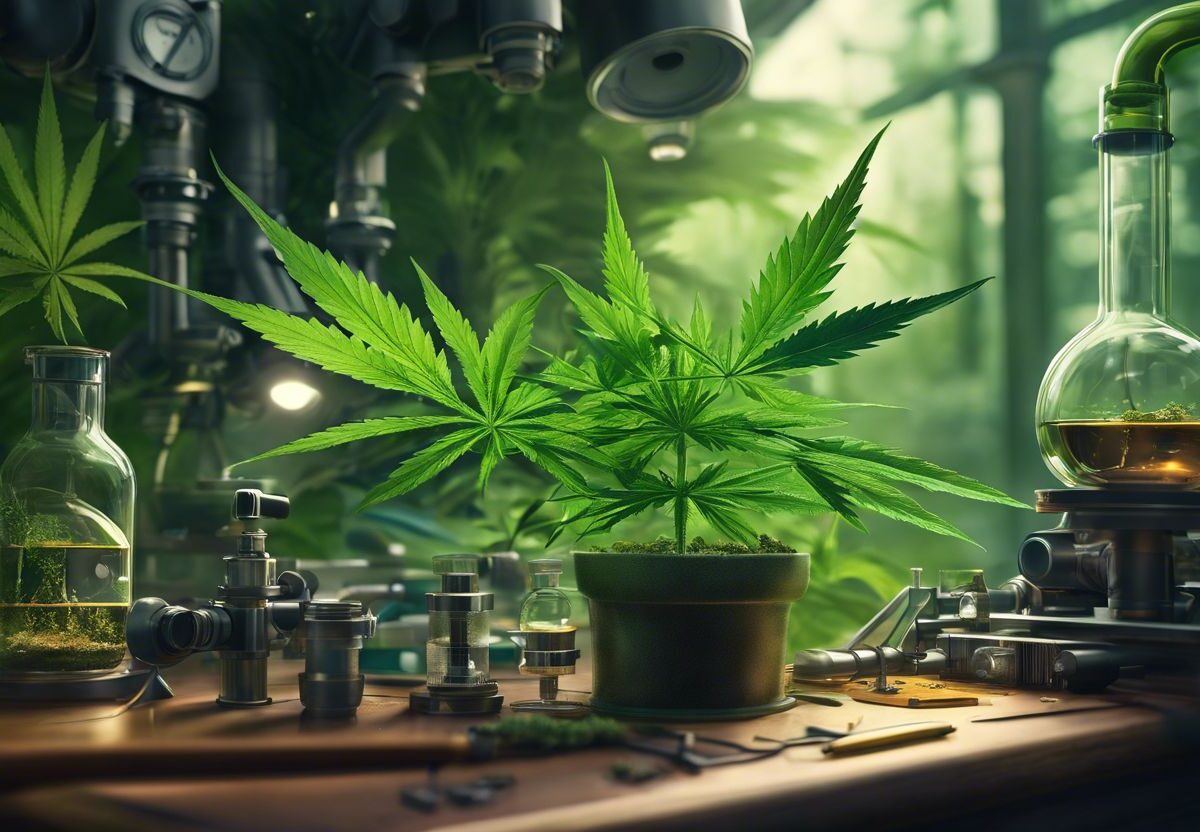What Is Weed Flavouring?
Weed flavouring is the process of adding liquid extracts, essences and flavors to cannabis. This improves its taste and smell. These flavorings can come from essential oils such as almond or lemon, vanilla, different fresh fruits or even synthetic chemicals. The ones made with natural ingredients are called pure while those using man-made components use the terms imitation or artificial.
The Building Blocks of Weed Flavouring
Terpenes are the natural fragrant substances in plants that give cannabis its special flavor and smell. There exist more than 150 kinds of terpenes within cannabis plants alone; every type has a role to play in creating different strains with various scents and tastes. Among these, myrcene is one of the most common ones known for providing earthy or musky hints while limonene delivers an aroma reminiscent of fresh citrus fruits and pinene exhibits characteristics similar to those found in pine trees’ smells.
These terpenes work together with cannabinoids such as THC and CBD to bring about what is known as the “entourage effect”. This means that when both these elements are present, they enhance each other’s therapeutic effects. Every strain of cannabis has its own unique combination of terpenes and cannabinoids which gives it a particular flavor profile and impacts on users.
The Role of pH Levels in Weed Flavouring
pH levels are very important in weed flavouring because they influence how well the plant can take in nutrients and make terpenes and cannabinoids, which give flavor. The best pH range for grows in soil is from 6.0 to 7.0, while it moves a little down to between 5.5 and 6.5 when using hydroponic or soilless systems.
If pH goes too high or low outside of these ranges it could cause nutrient lockout; this means that the plant won’t be able to get what it needs from its environment so growth might halt or become weak. The pH levels also impact the availability of nutrients, as some are more open to plants in a slightly acidic environment and others in neutral or slightly basic conditions. If growers can maintain the acidity or alkalinity within recommended range, it can help ensure that their cannabis plants take up a balanced variety of nutrients which is important for their growth, development and flavor production.
Organic Fertilizers
In growing cannabis, organic fertilizers can help to make the plants grow well, improve soil quality and increase nutrient absorption. These kinds of fertilizers are made from natural materials that supply necessary nutrients like nitrogen, phosphorus and potassium along with secondary and micronutrients important for plant health.
Organic fertilizers give a steady and slow release of nutrients which helps in absorbing them gradually by cannabis plants leading to buds with better taste, smell as well strength. Moreover, organic fertilizers play a role in promoting robust root systems, better plant health and an enduring growing setting through boosting soil fertility as well as moisture preservation.
For those choosing organic fertilizers, they need to look at aspects such as nutrient quality, gradual release features and suitability with their growing techniques to encourage full plant growth while improving the taste and smell of cannabis plants.

A Crucial Factor in Weed Flavouring
Keeping the right temperature is very important for growing cannabis and ensuring weed flavouring because it affects many things like how fast plant metabolism happens, the speed of growth and general healthiness. All these elements eventually impact making terpenes and cannabinoids that give flavor and strength to the final product.
Changes in temperature can disturb enzymatic reactions, slow down photosynthesis processes and cause problems related to stress; all these factors affect both quality as well as amount of resin produced by plants.
Those who cultivate cannabis must maintain specific temperatures within different phases of plant life.
The Impact of Light on Weed Flavouring
Cannabis growing is greatly affected by light, which not only impacts plant growth but also the making of terpenes and cannabinoids that give taste and power to buds. Various types of light spectrums like blue lights or red ones have special effects on cannabis plants: blue light helps with growing leaves while red-colored lights are good for flowering stages. This combination increases yield and improves weed flavouring properties in final products by influencing cannabinoid production.
For improving flavor, it’s essential growers give their plants a balanced spectrum of light to promote strong development as well as healthier and larger harvests. This mixture imitates what natural sunlight provides, encouraging maximum growth potential while enhancing tastes due to increased production of terpenes from cannabinoids.
Combining Flavors for Unique Profiles
Mixing various kinds of cannabis strains is a form of art where different types are combined together to produce unique flavor characteristics. This technique lets people adjust their experience with cannabis according to what they like best – whether it’s making the effects stronger or weaker, changing how strong it feels, or just creating more complex tastes and smells.
When picking strains that match well in terms of flavor, pay attention to both the terpene content and particular taste profiles each strain offers. For instance, a fruity strain matched with a sweet and earthy strain could mix well together. When blending various strains, it is crucial to try out different proportions and combinations for achieving the best taste balance. This can be done by beginning with an equal 50-50 blend and modifying according to individual liking.
In this changing cannabis market, the skill of weed flavouring still has a vital role in making the overall experience better. When we learn about terpenes, pH levels and other details, those who grow cannabis and those who use it can fully utilize their marijuana’s capacity. The chances to make special flavors are unbounded: from picking strains carefully and using organic fertilizers to controlling temperature or light precisely.

